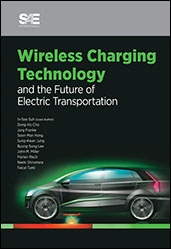Journal Article
A Study on How to Utilize Hilly Road Information in Equivalent Consumption Minimization Strategy of FCHEVs
2014-04-01
2014-01-1827
This paper presents an adaptation method of equivalent factor in equivalent consumption minimization strategy (ECMS) of fuel cell hybrid electric vehicle (FCHEV) using hilly road information. Instantaneous optimization approach such as ECMS is one of real-time controllers. Furthermore, it is widely accepted that ECMS achieves near-optimum results with the selection of the appropriate equivalent factor. However, a lack of hilly road information no longer guarantees near-optimum results as well as charge-sustaining of ECMS under hilly road conditions. In this paper, first, an optimal control problem is formulated to derive ECMS analytical solution based on simplified models. Then, we proposed updating method of equivalent factor based on sensitivity analysis. The proposed method tries to mimic the globally optimal equivalent factor trajectory extracted from dynamic programming solutions.

